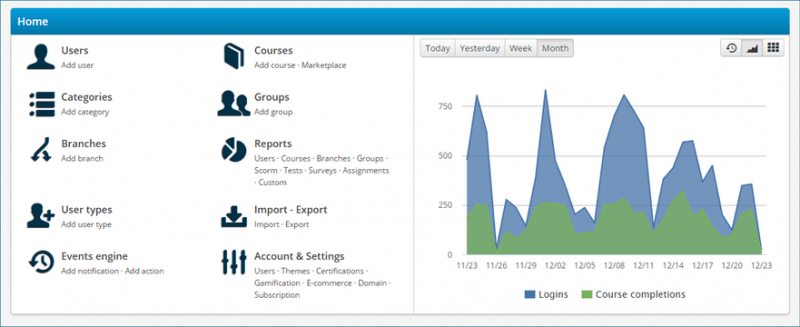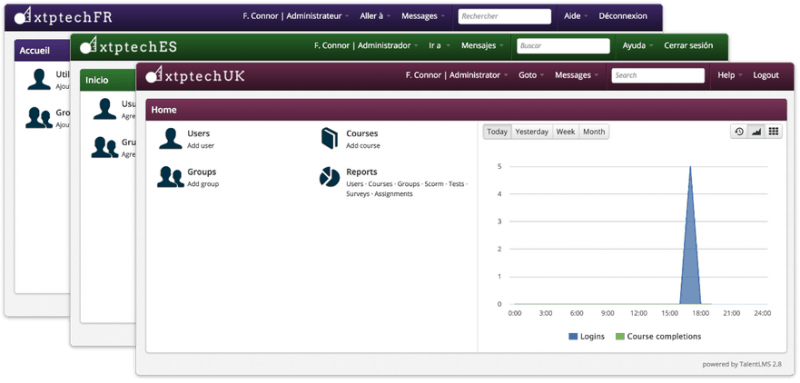Talent LMS And The Extended Enterprise
eLearning has gone from strength to strength since its niche days in the early nineties, growing into a $120 billion dollar industry and successfully replacing traditional learning in many kinds of enterprise and organizational training.
There’s however an important area of enterprise training, where eLearning-based approaches lend themselves very well, but in which automated training has only recently started to gain traction. We're talking, as you might have already guessed from the title of this article, about extended enterprise training.
The term “extended enterprise”, in case you’re not familiar with it, covers the kind of businesses whose success depends on a wider network of partners. This description fits a surprisingly large segment of the enterprise market, from the huge franchise sector to car dealerships, resellers, authorized support centers, and all kinds of subsidies.
A lot of businesses with an extended enterprise network either implement training only internally, or prepare and send training material to their partners, leaving the actual training up to them (with the occasional centrally organized seminar to bring higher level executives up to date with the latest developments).
It increasingly becomes a necessity, however, for businesses to implement a centralized eLearning-based training program that works across their extended enterprise network, with benefits that go beyond time and cost savings.
For starters, it allows the parent enterprise to have finer control over what, when and how is taught across all their partners, ensuring a more standardized training program of higher quality.
This in turn enables faster “time to market”, as now the parent company can introduce new products, services, protocols etc. and initiate a new training round for all of its partners as soon as the new training courses are ready. This increased agility is achieved thanks to eLearning-based training, which offers the competitive edge to businesses operating in fast paced markets that need to be able to quickly respond to changing trends and conditions.
It’s not all smooth sailing though. Training for the extended enterprise has some difficulties which those implementing such programs need to take into account.
Some of these issues are shared with any kind of wide-ranging training program that spans different departments, branches and countries, so for companies with branches across the globe, they will be problems that they have also encountered on their internal training programs. Others will be unique to having to train disparate partners, with different company cultures and motivations.
For example instructors cannot simply assume that extended enterprise learners share the same background (regarding education, business skills, professional culture, etc.) with internal employees. While some of the training material might be appropriate for the whole network, other parts will have to be adapted to the appropriate audience.
Language for example, is a key consideration in eLearning-based training. Some companies can get away with training their international partner network in English (or some other single language of choice). Others will need to translate their content to each regional language, especially if it's meant for lower level employees that cannot be assumed to speak English.
There will also be regional differences to take into account, for example differences in local business practices and regulations that will have to be reflected in course material meant for an international partner network.
Last, but not least, time zone differences will have to be taken into account when scheduling any kind of instructor-led training, as well as for providing training support to your learners (e.g. to have your instructors available at a convenient time across your whole area of operations, or to arrange for rotating shifts).
This is where a modern learning management system such as TalentLMS can help businesses implement and manage their extended enterprise training program. While companies with a self-hosted eLearning system for internal use can always buy extra infrastructure in order to cover an extended partner network, with a Cloud based LMS like TalentLMS this scalability comes built-in, and without incurring any burden to your IT department. You simply sign up as many extended enterprise learners as you wish, and it all works automatically.
TalentLMS also has extended (no pun intended) built-in tools to help you correctly reflect your partner network's organizational structure. Using branches, groups, categories and user types, you can tailor your training program to the needs of both your internal learners and your extended network ones.
Flexibility in TalentLMS goes all the way to being able to choose different languages at the branch level, assigning different supervisors and instructors per branch, and segmenting your courses by study groups and user types. Each branch, for example, can correspond to a different national-level network, and have its own URL, courses and users, while your in-house administrator retains centralized control over all of them.
And while not inherently tied to extended enterprise needs, TalentLMS gamification options can help stir up a little competition between your network partners, which is a good way to motivate your learners and increase their engagement.
The best part is that enterprises get to use all the great tools that make TalentLMS so effective and intuitive in both their internal and extended enterprise training, with the software automatically adjusting to the increased workload and learner count.
Conclusion
Making use of eLearning only for your internal enterprise training is so 2010. Businesses operating in an extended enterprise setting should extend their training programs to cover their partners, dealers and subsidies, so that they increase their agility and gain total control over the training of their business network.
eLearning tools such as TalentLMS can help do this in an flexible way that is both cost- and time-effective.











